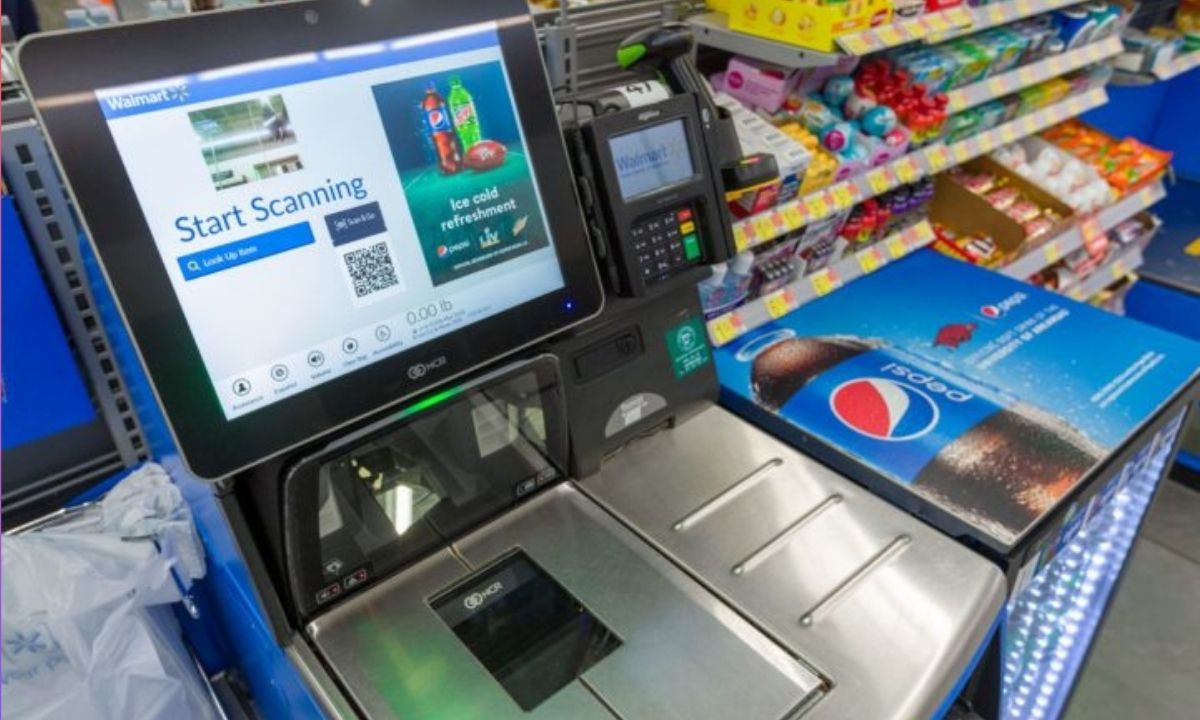Walmart’s Self-Checkout: In the ever-evolving landscape of retail, Walmart is no stranger to innovation. Recently, reports have surfaced about potential changes to the self-checkout experience at the retail giant’s stores. Let’s understand what these changes entail, who they affect, and the reasoning behind them.
The Evolution of Walmart’s Self-Checkout
According to a report , Walmart is exploring modifications to its self-checkout routes, potentially restricting access to certain groups of shoppers. Specifically, self-checkout may become exclusive to Walmart+ subscribers or Spark delivery drivers—a move aimed at streamlining the checkout process and enhancing convenience.
Walmart’s Self-Checkout: Understanding Walmart+ and Spark
Walmart+ is a subscription service offered by the retailer, providing members with benefits such as free delivery, gas discounts, and more. Meanwhile, Spark is a delivery service exclusive to Walmart, facilitating efficient delivery operations for the company.
Walmart’s Self-Checkout: Dispelling Misconceptions
While recent social media posts may suggest a widespread rollout of these changes, Walmart officials clarify that this is not a universal shift. Instead, decisions regarding self-checkout access are made at the discretion of individual store managers, allowing for flexibility and adaptation to local needs and conditions.
Walmart’s Self-Checkout: Impact on Ohio Walmart Locations
With 138 supercenters across Ohio, including several in major cities like Cincinnati, Columbus, and Dayton, the potential changes to self-checkout lanes could affect a significant number of shoppers in the state.
Walmart’s Self-Checkout: What to Expect
If implemented, self-checkout lanes may only be accessible to Walmart+ subscribers or Spark delivery drivers at select locations. Additionally, during peak hours, self-checkout lanes may be temporarily closed or restricted to certain populations, while traditional checkout lanes remain open to all shoppers.
The Rationale Behind the Changes
Walmart’s reconsideration of the self-checkout approach reflects a broader trend among major retailers. By limiting access to self-checkout, stores may better address concerns related to shoplifting and enhance security measures.
Navigating the Transition
For shoppers who are not Walmart+ subscribers or Spark delivery drivers, these changes may necessitate a shift in their checkout routines. Additionally, those with larger shopping loads may find themselves redirected to traditional checkout lanes to ensure efficient service for all customers.
Conclusion
As Walmart continues to adapt to the evolving retail landscape, changes to the self-checkout experience signify the company’s commitment to enhancing convenience and security for shoppers. While these adjustments may require some adjustment, they ultimately reflect Walmart’s dedication to providing a seamless and efficient shopping experience for all.
Read More:
